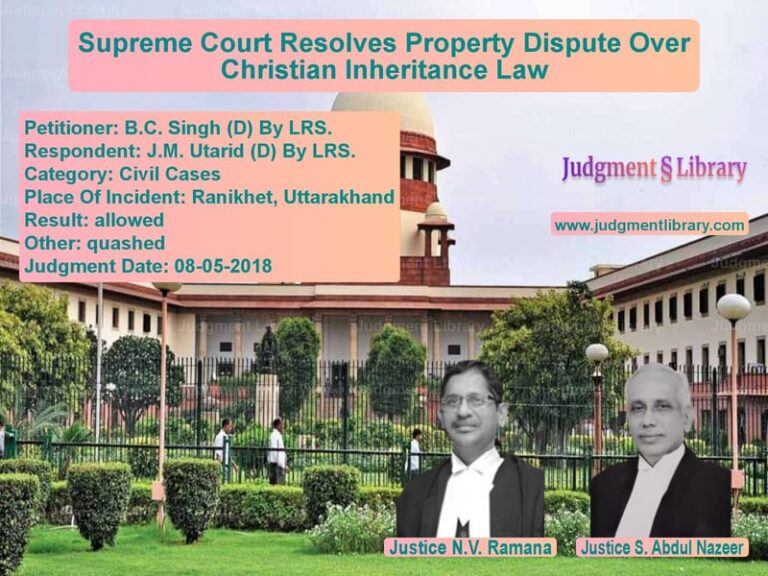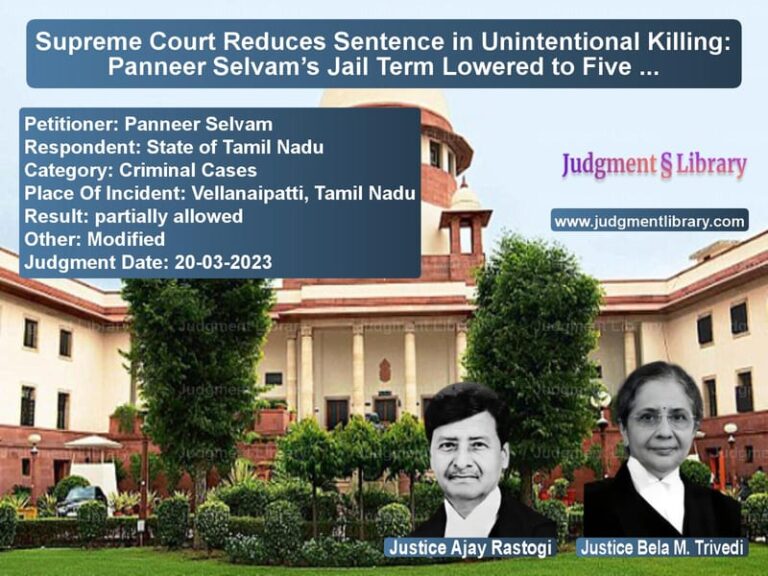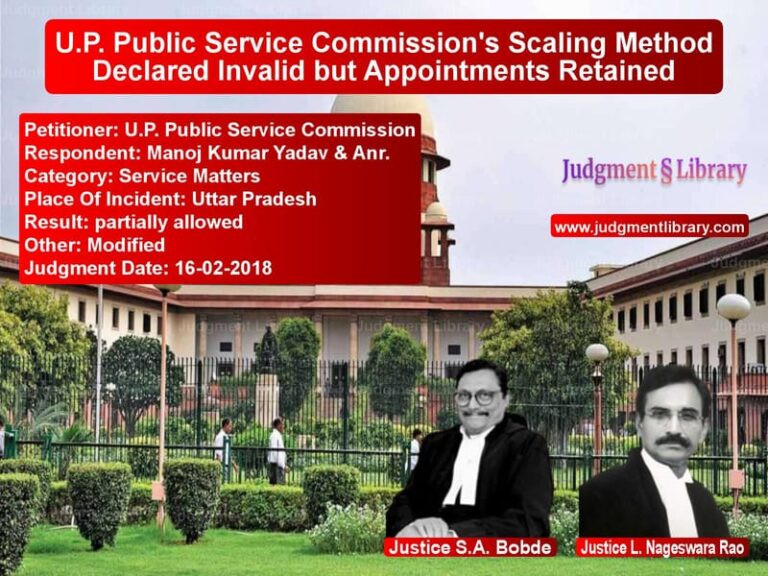Supreme Court Upholds Uttar Pradesh Higher Judicial Service Recruitment Rules
The Supreme Court recently ruled in a case concerning the recruitment rules for the Uttar Pradesh Higher Judicial Service (UPHJS), specifically challenging Rules 8(1) and 12 of the UPHJS Rules, 1975. The petitioners contended that these rules unfairly disqualified candidates based on age and recruitment gaps, violating Articles 14 and 16 of the Indian Constitution. The respondents, including the High Court of Judicature at Allahabad, defended the rules as essential for maintaining judicial standards.
Background of the Case
The dispute arose when the Uttar Pradesh High Court issued an advertisement for direct recruitment to the UPHJS. Some candidates were disqualified due to the prescribed upper age limit of 45 years (48 years for SC/ST candidates). The petitioners argued that the recruitment gaps of up to three years resulted in candidates becoming ineligible due to no fault of their own. They sought a ruling that recruitment should be conducted annually to prevent unfair disqualification.
Key Legal Issues
- Whether the recruitment process violates Articles 14 and 16 of the Constitution by unfairly disqualifying candidates due to age restrictions.
- Whether Rule 8(1), which mandates recruitment at least once every three years, justifies the absence of annual recruitment.
- Whether Rule 12, which sets an age limit of 45 years, should be modified to account for recruitment gaps.
- Whether the Allahabad High Court failed to adhere to the Supreme Court’s directions in Malik Mazhar Sultan v. U.P. Public Service Commission, which emphasized timely judicial recruitment.
Arguments by the Petitioners
- The petitioners contended that Rule 8(1), which allows recruitment gaps of up to three years, results in arbitrary disqualification of otherwise eligible candidates.
- They argued that the upper age limit unfairly penalized candidates who were eligible in previous recruitment cycles but could not appear due to infrequent examinations.
- They relied on the Supreme Court’s ruling in Malik Mazhar Sultan, which emphasized that judicial recruitment should be conducted annually.
- They contended that the age cut-off should align with the last date for submitting applications rather than the first day of January following the advertisement.
Arguments by the Respondents
- The High Court and the state government defended the validity of the recruitment rules, asserting that age criteria are essential for maintaining judicial efficiency.
- They argued that judicial appointments follow a structured process, and recruitment has been conducted in compliance with the rules, including in 2012, 2014, and 2016.
- They contended that recruitment cannot be demanded annually unless mandated by legislation.
- The Allahabad High Court had previously upheld the validity of Rule 8, reinforcing its necessity in the judicial selection process.
Supreme Court’s Observations
The Supreme Court, led by Justice Dhananjaya Y. Chandrachud and Justice Hemant Gupta, upheld the constitutional validity of Rules 8(1) and 12, ruling that:
- “The prescription of an upper age limit is a policy decision and falls within the discretion of the rule-making authority.”
- “The periodicity of recruitment (every three years) does not create a fundamental right for annual recruitment.”
- “The cut-off date for determining eligibility is valid as per the established legal framework and does not require alteration.”
- “The court cannot rewrite recruitment rules based on individual hardships.”
Final Verdict
- The Supreme Court dismissed the petitions challenging the validity of Rules 8(1) and 12.
- The Court ruled that judicial recruitment follows an established policy framework, and any changes must come from the legislature.
- It reaffirmed that age-based eligibility criteria are necessary for maintaining judicial standards.
Implications of the Judgment
- The ruling reinforces the structured recruitment process for higher judicial services in Uttar Pradesh.
- It clarifies that the judiciary does not have a fundamental right to demand annual recruitment.
- The judgment sets a precedent for similar cases challenging age-based eligibility in government recruitment.
The Supreme Court’s decision upholding the UPHJS recruitment rules ensures that judicial appointments maintain consistency and uphold the rule of law.
Petitioner Name: Hirandra Kumar.Respondent Name: High Court of Judicature at Allahabad.Judgment By: Justice Dhananjaya Y Chandrachud, Justice Hemant Gupta.Place Of Incident: Uttar Pradesh.Judgment Date: 29-01-2019.
Don’t miss out on the full details! Download the complete judgment in PDF format below and gain valuable insights instantly!
Download Judgment: Hirandra Kumar vs High Court of Judica Supreme Court of India Judgment Dated 29-01-2019.pdf
Direct Downlaod Judgment: Direct downlaod this Judgment
See all petitions in Employment Disputes
See all petitions in Recruitment Policies
See all petitions in Public Sector Employees
See all petitions in Judgment by Dhananjaya Y Chandrachud
See all petitions in Judgment by Hemant Gupta
See all petitions in dismissed
See all petitions in supreme court of India judgments January 2019
See all petitions in 2019 judgments
See all posts in Service Matters Category
See all allowed petitions in Service Matters Category
See all Dismissed petitions in Service Matters Category
See all partially allowed petitions in Service Matters Category







